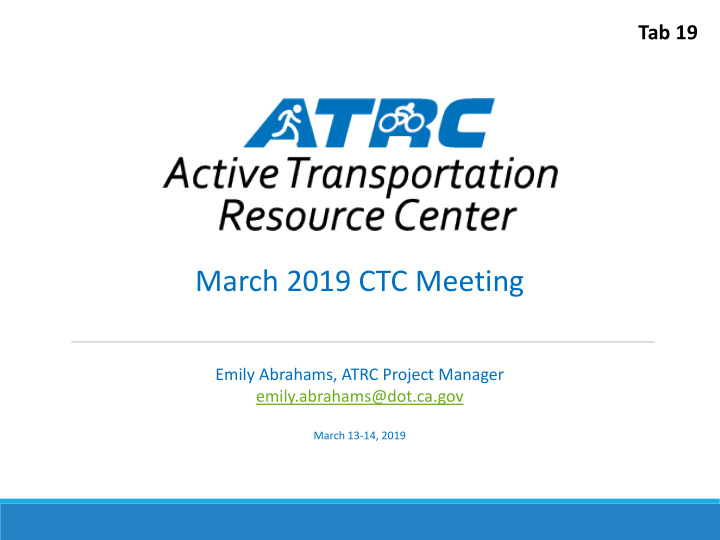



Tab 19 March 2019 CTC Meeting Emily Abrahams, ATRC Project Manager emily.abrahams@dot.ca.gov March 13-14, 2019
Active Transportation Resource Center (ATRC) The ATRC’s mission is to provide resources, technical assistance, and training to active transportation partners across California to increase opportunity for the success of active transportation projects The ATRC is funded each cycle through the ATP
What d t does oes the e ATRC o offer er? TRAINING Provides In-Classroom Training on bicycle and pedestrian planning, design, and safety Provides Webinar Training on non-infrastructure and active transportation topics TECHNICAL ASSISTANCE Provides Technical Assistance though individualized support and/or workshops to encourage ATP participation for Infrastructure and Non-Infrastructure projects RESOURCES/TOOLS Develops Tools to inform and support active transportation projects Provides Resources for use on various active transportation project types
ATRC RC: C Current E Eff fforts Non-Infrastructure (NI) and Public Health Expertise from the California Department of Public Health (CDPH) o Over 50 resources linked on website o NI Technical Assistance and Workshops/Presentations o 894 TA consultations/questions answered (vary in complexity) o 5 workshops o 24 presentations o Webinars, Teleconferences, and Flash Training o 25 webinars and teleconferences (and counting) o 4 Flash trainings with 546 views combined (and counting)
ATRC RC: C Current E Eff fforts Bicycle and Pedestrian Planning and Design Training o 1 course curriculum developed (Intro to Bicycle Transportation Planning and Design) o 10 Intro to Bicycle Transportation Courses given; 4 planned o 1 Online Course being developed (Intro to Bicycle Transportation Planning and Design) o 6 FHWA Designing for Bicycle/Pedestrian Safety Training Courses given; 1-3 planned Website and List Serve o 2000 contacts on the ATRC List Serve o 101,449 website visitors and 522,746 web page hits
ATRC RC: C Current E Eff fforts Project/Application Technical Assistance for Disadvantaged Communities o 12 full-day ATP project/application workshops (ATP CY 2) o 5 project/application support to DAC (ATP CY 4; with Strategic Growth Council) ATP-Transportation Injury Mapping System (TIMS) Tool o ATP-TIMS Tool was used successfully in CY 4 of the ATP
ATP-TIM IMS T Too ool
ATRC: Efforts Underway
Statewide A e Active T e Transportation C Count Database ( se (SA SATDB) B) a and C Count Guidance The SATDB and Count Guidance is needed to: Meet the data collection and reporting needs of the ATP o Establish statewide counting methodologies o Develop a methodology to determine project level counts Establish statewide consistencies for active transportation data collection and reporting Automated Bike/Ped Counter Loan Program
Ac Active T Transpor ortati tion on P Program Be Benefit-Cos ost C t Comparison on Tool ol Develop a research-based easy-to-use tool to compare ATP projects through a variety of benefits. Ability to update over time, as more research becomes available, to continually make the tool more reliable and consistent. This tool could be used as part of the ATP application evaluation process in future ATP cycles.
AT ATP-TIMS T Tool Up Updates es and S Str treet S Story f for or ATP ATP-TIMS Tool updates are needed to: Create a new feature that will allow a user to create a Before/After Report of crash data for a specific project limits Street Story for ATP is needed to: Allow agencies to solicit public input on an ATP project
ATP Project As ect Assessment C t Contr tract ct Assist agencies in conducting before and after counts, safety analysis, and other benefits for ATP projects to ensure accuracy and consistency • Collect before data • Collect after data • Collect 3-5 year after data (Impact Analysis) ATP Project Profiles
http://caatpresources.org
Recommend
More recommend